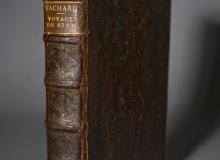Malacca

When sail was king, and kingdoms were built on the trade that carracks and galleons could carry, then the ports that could guarantee the safe passage of these vessels and the strategic access to the location of the luxury goods were highly sought after prizes. Naturally enough, those ports that became the most fortified or the most fought over were the ones that enjoyed a range of natural advantages. They needed to be able to guarantee a quantity of fresh water, they needed to have safe harbors for the time of storms, and the traders that lived there needed to be able to offer fresh and healthy food as well. All ports had some of these attributes but the names of ports that became most well known were those that also had a strategic location. The ports that could control access to the source of luxury items, or which controlled the most travelled stretches of water became the most visited and most valuable of locations.
In the early modern world one of these ports was Malacca, which sat on the northern side of the Malacca Straits, and which saw the bulk of traffic from the Spice Islands, and from Japan and China, pass by its front doors. Portugal forced their way in during the early part of the sixteenth century – supplanting the ruling sultans – and then they in turn were defeated by Dutch troops in 1640. Missionaries and traders passed through here, and in its day it was a thriving place of exchange.



